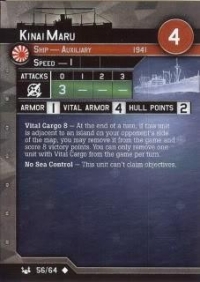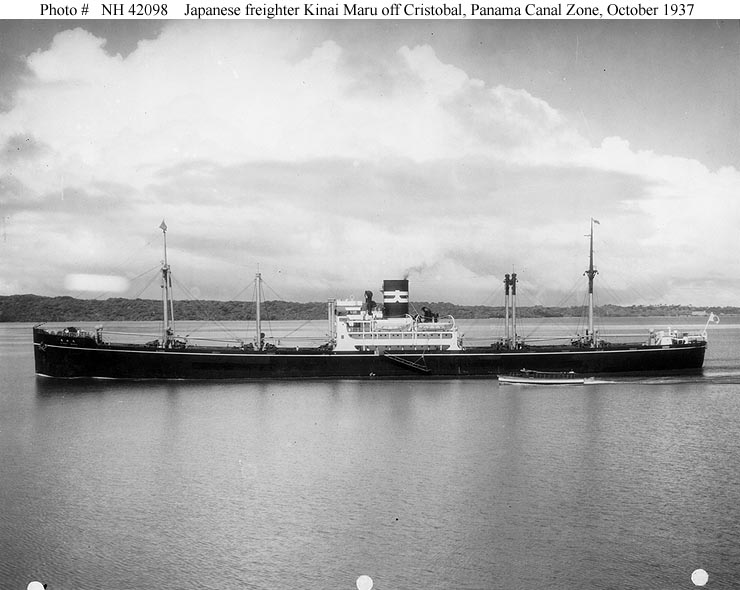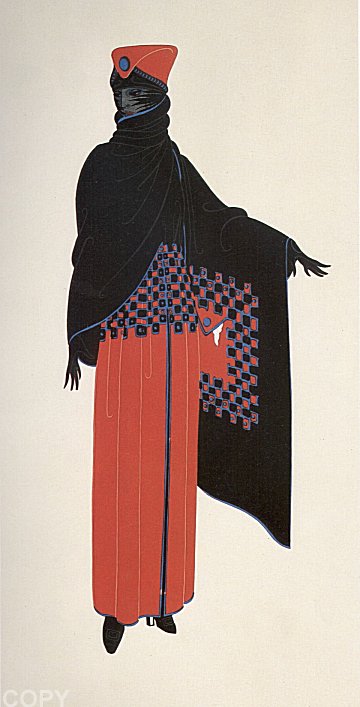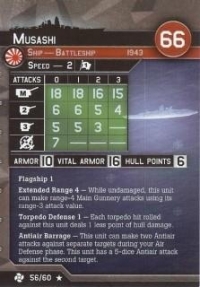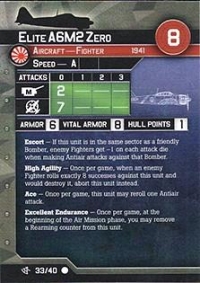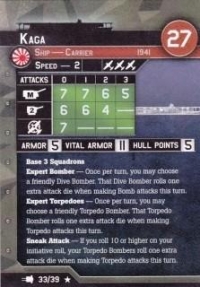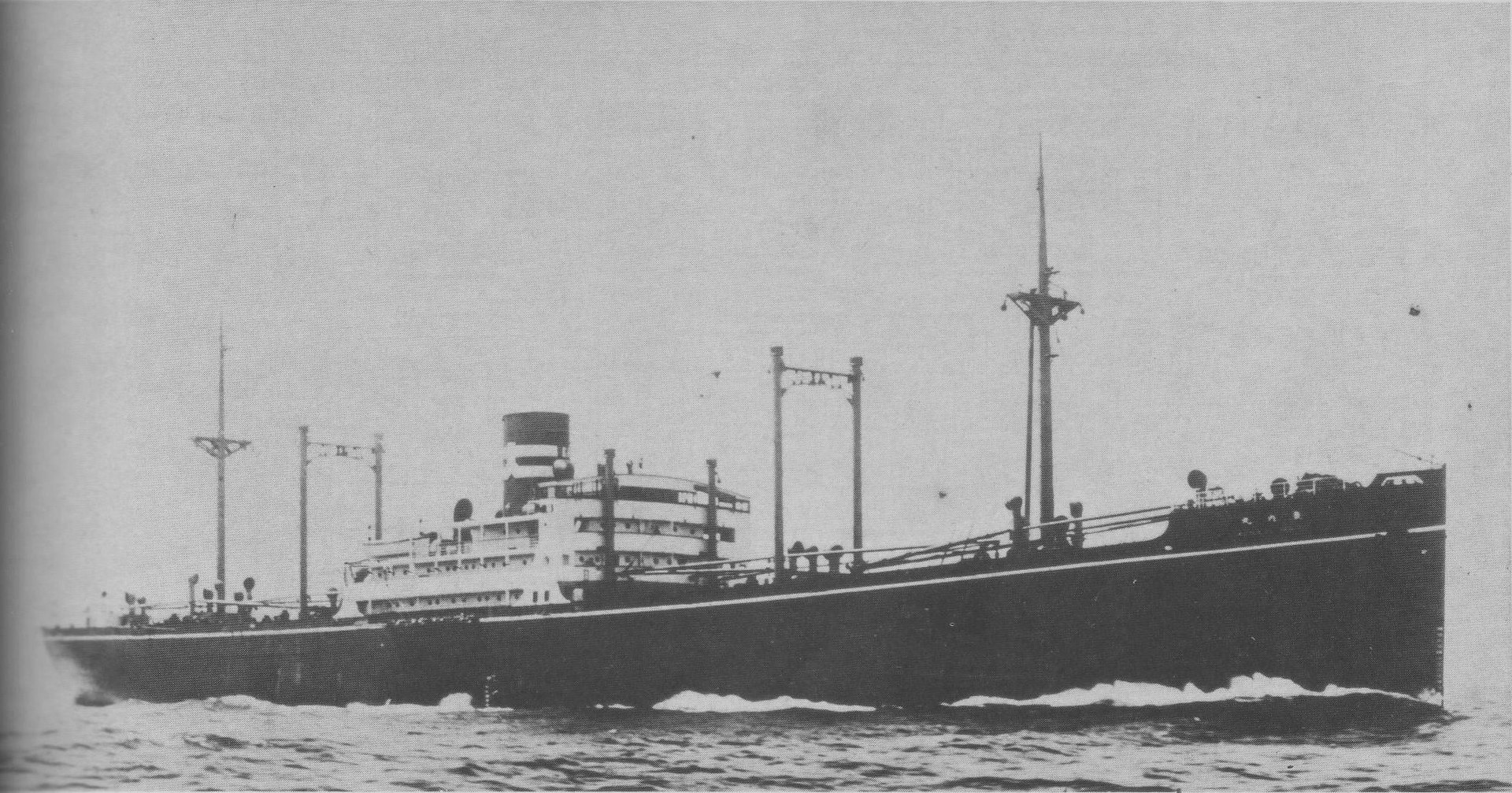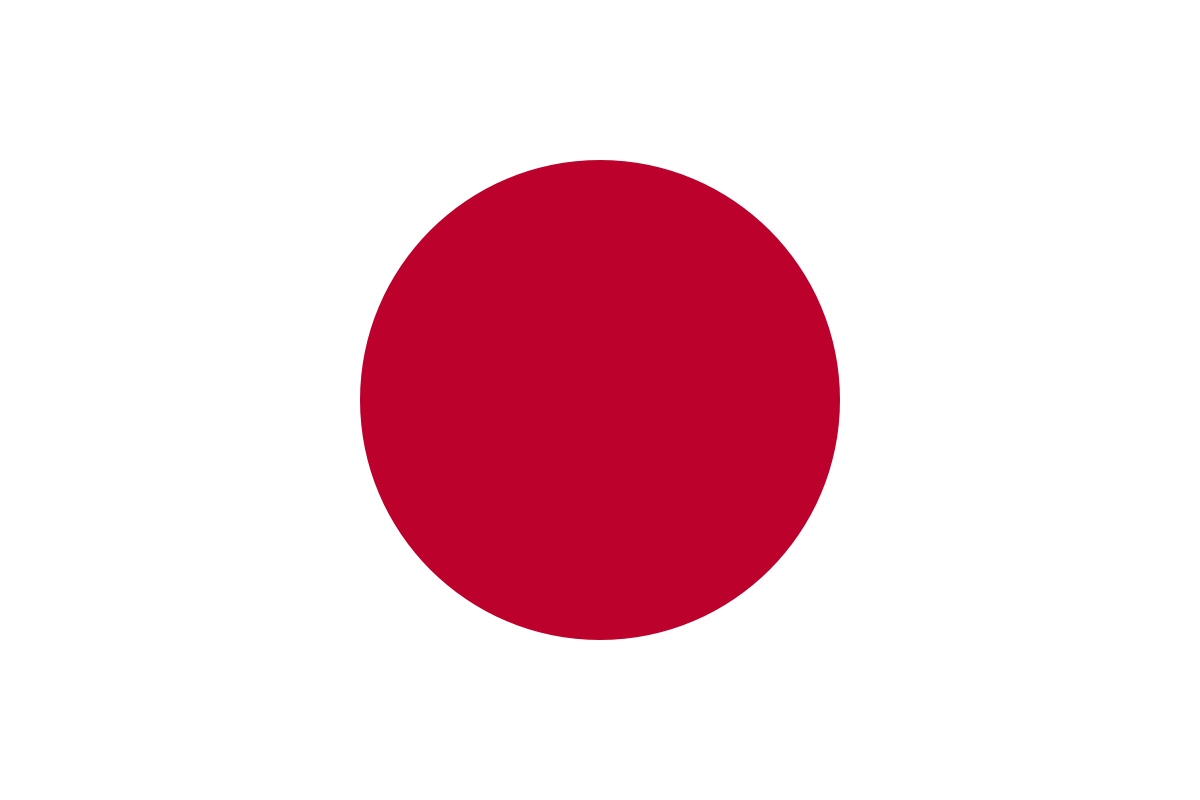Prototype: The MV Kinai Maru was an 8360 gross ton freighter built by Mitsubishi Shipbuilding & Engineering Company Ltd, Nagasaki, Japan, in 1930 for Osaka Shosen Kaisha for the Yokohama-New York City cargo run. Launched on 1 April 1930 and completed on 15 June, she was slated for an express service between Yokohama and New York. She broke the industry standard of 35 days by covering the route in 25 days. She plied this route until the outbreak of World War II and was requisitioned into Imperial Japanese Navy as a transport in late 1941.
Employed in support of Japan's war effort she participated in landing troops at the battle of Milne Bay. On 10 May 1943, she was torpedoed by the submarine USS Plunger near Truk at 0400. Stopped in the water, Tatsutake Maru came alongside and started transferring the 4,000 passengers and troops. At 0748 Plunger torpedoed Tatsutake Maru while she was still alongside Kinai Maru and Tatsutake Maru sank by the stern at 14-29N, 149-23E. At 1253, Plunger found Kinai Maru still afloat and torpedoed her again, without sinking her. The Japanese torpedo boat Hiyodori rescued the survivors of Tatsutake Maru and Kinai Maru and left the area. Still afloat on 11 May at 0600, Plunger surfaced and sank her by gunfire at 14-33N, 149-23E.
Employed in support of Japan's war effort she participated in landing troops at the battle of Milne Bay. On 10 May 1943, she was torpedoed by the submarine USS Plunger near Truk at 0400. Stopped in the water, Tatsutake Maru came alongside and started transferring the 4,000 passengers and troops. At 0748 Plunger torpedoed Tatsutake Maru while she was still alongside Kinai Maru and Tatsutake Maru sank by the stern at 14-29N, 149-23E. At 1253, Plunger found Kinai Maru still afloat and torpedoed her again, without sinking her. The Japanese torpedo boat Hiyodori rescued the survivors of Tatsutake Maru and Kinai Maru and left the area. Still afloat on 11 May at 0600, Plunger surfaced and sank her by gunfire at 14-33N, 149-23E.
Country: Japan is an island nation in the Pacific Ocean with dense cities, imperial palaces, mountainous national parks and thousands of shrines and temples. Shinkansen bullet trains connect the main islands of Kyushu (with Okinawa's subtropical beaches), Honshu (home to Tokyo and Hiroshima’s atomic-bomb memorial) and Hokkaido (famous for skiing). Tokyo, the capital, is known for skyscrapers, shopping and pop culture.
Although legend has it that Japan was founded in 660BC, archaeologists agree that settlement in the Japanese archpelago dates back as far as 100,000 years. The Jomon Period (8000-c.300BC) is the earliest that has been studied. It is named after the 'jomon' or cord-marked pattern style of pottery of the period.
Although legend has it that Japan was founded in 660BC, archaeologists agree that settlement in the Japanese archpelago dates back as far as 100,000 years. The Jomon Period (8000-c.300BC) is the earliest that has been studied. It is named after the 'jomon' or cord-marked pattern style of pottery of the period.
Item created by: Lethe on 2015-05-31 17:46:30. Last edited by gdm on 2019-06-10 16:51:05
If you see errors or missing data in this entry, please feel free to log in and edit it. Anyone with a Gmail account can log in instantly.
If you see errors or missing data in this entry, please feel free to log in and edit it. Anyone with a Gmail account can log in instantly.


